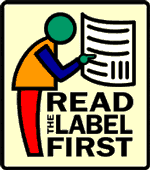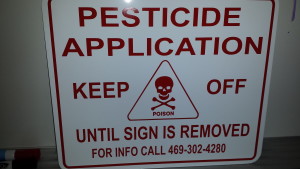 For over twenty years the Texas School IPM rules have confused IPM Coordinators and Pest Management Professionals due to our classification of pesticides. For some, there is a belief that no pesticides can be used, for others; they are just not sure what is the difference between Green, Yellow, or Red Category products?
For over twenty years the Texas School IPM rules have confused IPM Coordinators and Pest Management Professionals due to our classification of pesticides. For some, there is a belief that no pesticides can be used, for others; they are just not sure what is the difference between Green, Yellow, or Red Category products?
School districts are allowed to apply a wide variety of pesticides to control pests like, rodents, insects and weeds at school buildings, grounds or other facilities in accordance with the approval for use and restrictions listed for each category. These categories are not based on signal words, but on active ingredients and its understanding these active ingredients that will assist you in establishing a good IPM program, but this will also assist those of you who service LEED buildings.
For Texas School IPM rules and LEEDs Buildings products fall into three types of restrictions.
- Least Restricted
- These products are generally the least hazardous pesticides on the list. In some cases may be called “exempt” in some state school IPM rules.
- Under Texas School IPM rules they are considered Green Category
- More Restricted
- These products include specific restrictions on allowable situations. For instance they may have a residual effect or can be hazardous to certain insect species like bees.
- Texas School IPM rules consider these products to be in the Yellow Category
- Most Restricted
- These are pesticide products pose the greatest health or environmental concerns, but which are nevertheless considered the least-hazardous chemical alternative for a particular purpose.
- Under Texas School IPM rules Red Category products carry a Danger or Warning Signal Word or are considered Restricted Use, State Limited Use or a Regulated Herbicide.
Under the Green Category the following types of insecticides or active ingredients are considered least restrictive type products.
- boric acid; disodium octoborate tetrahydrate or related boron compounds; silica gel; diatomaceous earth; (considered inorganic types products)
- insect growth regulators (IGRs)
- microbe-based insecticides;
- botanical insecticides containing no more than 5% synergist (and does not include synthetic pyrethroids);
- biological (living) control agents;
- pesticidal soaps; natural or synthetic horticultural oils;
- insect and rodent baits in tamper-resistant containers, or for crack-and-crevice use only
Green Category pesticides do not require prior written approval from the IPM coordinator. These pesticides may be applied at the licensee’s discretion under the guidelines of the school district IPM program; however, there are a few items you do need to consider. First, when used indoors the area must be posted 48 hours in advance, this follows the SPCS rules for Pest Control Signs §7.146, if applying outdoors the area must be posted at the time of application, but sign can be removed after the application is complete. For both indoors and outside, no students can be present at the time of application, but should be able to reenter the area after application is made, unless the product or district requires a different reentry interval.

Remember TX school IPM rules require that you post at the time of treatment and keep in place until the specified reentry has been reached.
Yellow Category pesticides do require approval by the certified applicator and a copy must be provided to the IPM Coordinator. Yellow Category pesticides may be applied indoors if students are not present or not expected to be present in the room or treated area within the next four (4) hours following the application, or until the reentry interval specified on the pesticide label has expired, whichever interval is longer. This also requires the 48 hour posting notification prior to treatment. These products may be applied outdoors if students are not present or not expected to be present within ten (10) feet of application site and the area is secured and reentry is in accordance with this section for no less than four (4) hours, or until the reentry interval specified on the pesticide label has expired, whichever interval is longer. Yellow category products have a Caution Signal Word; they don’t fit into the Green Category. Typically these products are herbicides with a Caution signal word, residual products like Talstar® P Professional Insecticide, Suspend® SC, and Termidor® SC termiticide/insecticide to name a few.
Red Category pesticides prior to the application the licensee must provide written justification to the IPM Coordinator for the use of the Red Category pesticide and must obtain signed approval for the application from the IPM Coordinator. Red Category pesticides may be applied indoors if students are not present and are not expected to be present in the room or treated area within eight (8) hours following the application, or until the reentry interval specified on the pesticide label has expired, whichever interval is longer. Red Category pesticides may be applied outdoors if students are not present within twenty-five (25) feet of the application site, the area is secured in accordance with this section, and reentry by students is prohibited for no less than eight (8) hours, or until the reentry interval specified on the pesticide label has expired, whichever interval is longer. Again Red Category products have a Warning or Danger Signal Word, or it contains an active ingredient that has been designated as a restricted use pesticide, a state-limited-use pesticide or a regulated herbicide in the state of Texas.
To help you out, we have updated our Recognizing Green List Products for Texas Schools in Texas Schools this is not a product endorsement, but a guide to help you learn and understand what is considered Green versus Yellow or Red. Feel free to pass this on to your pest control provider or certified applicators who work with schools or LEEDs buildings.

 .
.